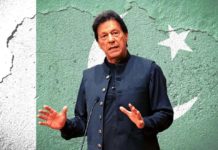Disclaimer: The Eqbal Ahmad Centre for Public Education (EACPE) encourages critical and independent thinking and believes in a free expression of one’s opinion. However, the views expressed in contributed articles are solely those of their respective authors and do not necessarily reflect the position or policy of the EACPE.
‘The Tribune’ edition of July 29, 2019 reported a triple murder in the historic town of Taran Taran, Punjab. The murders were in retaliation to a choice marriage between a boy and a girl from different castes. Both are Sikh families, following a faith which denounces caste. The ‘Times of India’ reports 300 cases of honor killings in the country in the last three years. Caste or community groups in Haryana hold kangaroo courts to pass punishment on couples who choose to marry in violation of the set social codes. Khap panchayats have dissolved marriages, forced rape victims to marry their rapists, expelled families from villages, and condoned honor killings through social approval, forcing the Supreme Court to come down heavily on them. Women have been dictated to stop using dress codes, dress traditionally and desist from talking to men outside the family.
If one looks up the dictionary for the meaning of ‘Honor’, it throws up words like ethics, distinction, fame, renown, merit, privilege etc. Strangely, many a family’s honor is related to the social and sexual behaviour or choices of its women. When and how did this come to be? Through what logic and rationality did Indian women become the torchbearers of the family honor? It’s an intriguing fact that instead of a man’s honor being defined by his ethics, conduct and merit, it came to be reflected in the behaviour of his sister, daughter or wife! On the contrary, a woman’s honor remained untouched by the behaviour of the male members of her family. Many social groups justify and condone murders of erring women relatives in the name of avenging the family honor. The terminology which dubs such killings as ‘Honor killings’ is in itself an indirect validation of murder in the name of honor. A strict code of conduct is enforced upon girls from infancy. It mainly entails obedience, subordinacy, chastity, endurance and virginity. This code of conduct is often internalized by many older women for gaining acceptability and merit in a patriarchal system. Women may provoke honor linked violence through forming sexual alliances, refusing arranged marriages, asking for divorce, infidelity, dressing inappropriately, leaving the home without permission, dating or speaking to men who are not family members, being victims of rape or even behaving or dressing provocatively. Any of these transgressions will obviously result in scandal and gossip in the community, which will directly result in loss of honor for the male members, for whom honor is gained through the control and dominance they exert over females and younger males in the family. Collective sanction by the community to control and regulate women’s behaviour, freedom and sexual choices gives it validity and acceptability in the guise of culture or tradition. In a society where the norms continue to be set by men, such controls are a reflection of deep rooted patriarchy with the overt motive of protecting women. The underlying fact is that the male of a patriarchal system wants to keep the strings of the woman in his hands, and cleverly terms this suppression as ‘honour’. Mythical characters like Sita, Parvati and Savitri are held up as examples of virtue and duty for women to emulate. It’s interesting to note that Krishna’s consort Radha is never quoted as such an example!
Deeply entrenched notions of patriarchal control have been politically exploited to target and terrorize certain minority groups.
The prevalence of caste and religion prejudices in India gives greater acceptance to the right of parents and even brothers to control the choice of a partner by their daughters. They must in no way step out of the caste and religious boundaries. Over the last some years, self styled protectors of Indian culture have taken it upon themselves to heckle and attack youngsters who are seen as violating the sacrosanct ‘Indian’ traditions. Self styled vigilante groups like the Bajrang Dal, RSS, Dukhtaran-e-Milat, to name a few, target youngsters celebrating Valentine’s Day or sitting together in parks. The police not only choose to look the other way, but have at times supported their hooliganism and been actively involved in moral policing. Deeply entrenched notions of patriarchal control have been politically exploited to target and terrorize certain minority groups. The myth of ‘love jihad’ has been actively promoted by extremist groups to create insecurity and anger in the Hindu community against the Muslims by accusing them of following a hidden agenda wherein Hindu girls are enticed by Muslim boys. No such evidence has actually come forth in the court to date. Many minorities like Christians, Coorgis and North Eastern communities are as much part of this country as the Hindus. There cultural norms are much more open and liberal in terms of sexual choices and intermingling of sexes. The Nair community of Kerela enjoyed much sexual freedom and could even keep relations with multiple partners at a time. Most communities in the North East states allow girls to choose their own mates and some did not sanction pre marital sex. These communities do not have a noticeable incidence of rape or killings. What gives anyone the right to disregard such liberal traditions and impose a subjective code of conduct as “Indian”? These self-styled protectors of a mythical ‘Indian culture’ choose to overlook that Indian is not synonymous with Hindu. Furthermore, that Hinduism never propagated prudish norms in myth or reality.
The most damaging of restrictive and suppressive attitudes are those propagated by teachers in rural and small town schools. It is commonplace to find girls and boys strictly segregated in co-educational schools, with the teachers on high alert against any interaction between them. Boys and girls have been known to be reprimanded and even beaten for so much as speaking to each other. In one rural school in the Bathinda district of Punjab, an affair between two schoolmates escalated to a feud between two village panchayats. The girl was withdrawn from the school and the panchayat demanded rustication of the boy from the school, who had to take his exams under police protection. These kinds of unhealthy, patriarchal environments instil perverted concepts of ‘honor’, encouraging violence, abuse and even murder. The Adolescence Education programme (AEP) was a sex education programme designed by the Ministry of Human Resource Development and national AIDS Control Organisation. It faced opposition in various states including Gujarat, Madhya Pradesh, Maharashtra, Karnataka and Rajasthan, who refused to allow it in their schools. Is it a surprise that many of the same states are notorious for the highest number of honour killings? According to the National Crime Records Bureau (NCRB), between 2014 and 2015 alone, the number of honor killings in India leapt up by a whopping 798 percent!
Paradoxically, rape is the fourth most common crime in a country which is obsessively concerned with safeguarding the ‘honor’ and virtue of its women! India has an average of 106 rapes in a day and 4 in 10 victims are minors. The conviction rate for rape remains a shameful 25.5 percent. Eve teasing is so prevalent that recently, girls from a school in Punjab have appealed to the High Court for safety. This in a society which claims to regard women as its ‘honor’ and worships them as goddesses! It seems that a schizophrenic chasm runs somewhere between the collective Indian social psyche. Most of the public entertainment media like the TV and cinema focuses overwhelmingly on romantic themes in keeping with public taste. The youth may watch cheap romance on celluloid and fantasize, but god help them if they opt to have normal relationships or friendships with the opposite sex. These kind of conflicting attitudes reflect a serious fault line in the concept of what is pushed as ‘Indian culture’ or morality. Natural instinctual behaviour may be regulated and controlled within reasonable limits, but forced suppression and criminalization of human urges promote distorted and violent expression to take on forms of a social evil. Let’s wake up to the fact that culture is not static; it is a dynamic process which must move in tandem with the larger global, social and technological scenario. Hypocrisy and double standards cannot be camouflaged in the name of a pseudo culture. Indian society must shed patriarchal attitudes and be honest, upfront and liberal to be healthy, safe and progressive. Therein will lie the safety and honor of women.
About the Author:
 Dr Ranjit Powar is a psychologist who has served with the Punjab Civil Services and earlier as a lecturer with the Punjabi University, Patiala. Besides writing as a freelancer, she works with NGOs for imparting employability training to high school students.
Dr Ranjit Powar is a psychologist who has served with the Punjab Civil Services and earlier as a lecturer with the Punjabi University, Patiala. Besides writing as a freelancer, she works with NGOs for imparting employability training to high school students.








